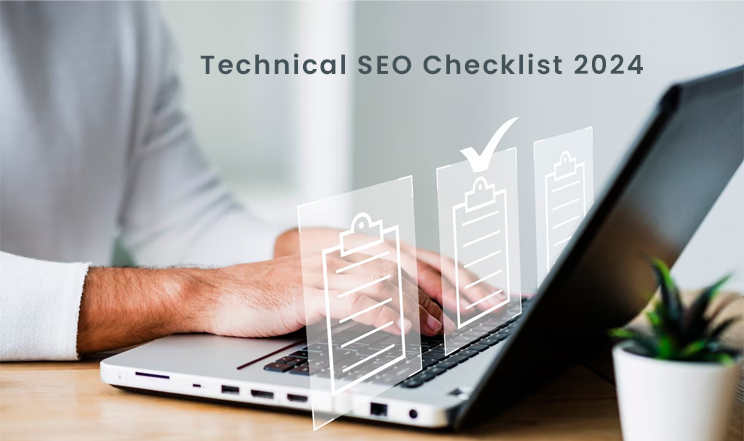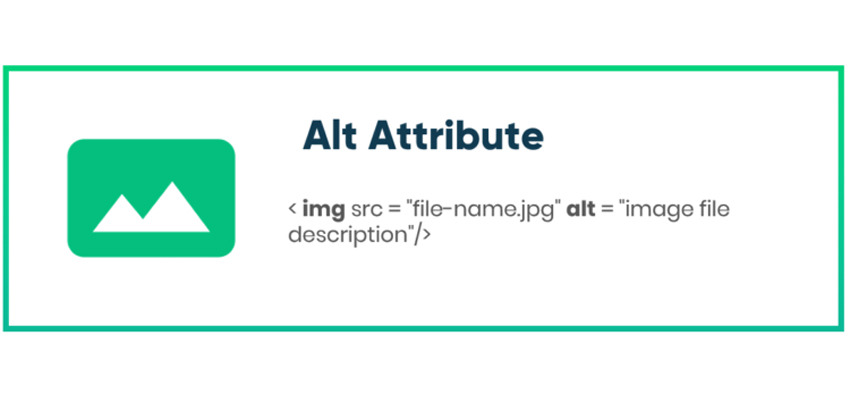Technical SEO Checklist for 2024

02/06/2024
/
Technical SEO Checklist for 2024
Technical SEO forms the essential foundation for any successful website. It ensures that your site operates smoothly, is secure, easily discoverable by search engines, and provides a positive experience for users. Neglecting technical SEO can result in a loss of traffic, conversions, and rankings to competitors.
But technical SEO is not a one-time thing. Technical SEO is an ongoing process, requiring continual monitoring and updates to align with evolving algorithms, technologies, and user expectations. To assist you in navigating the landscape of technical SEO in 2024, we have compiled a checklist of crucial tasks.
This checklist encompasses key areas such as optimizing site speed, ensuring mobile-friendliness, implementing structured data, addressing core web vitals, and securing your site with HTTPS. By utilizing this checklist, you can enhance your site's performance, user-friendliness, and visibility on search engines.
 Ensure your website is friendly for mobile users, as over half of web traffic comes from mobile devices. Follow these steps:
Ensure your website is friendly for mobile users, as over half of web traffic comes from mobile devices. Follow these steps:
 Selecting a reliable hosting provider is crucial as they handle storing and delivering your website's files. If your hosting service isn't dependable, your site may face issues like slow loading, frequent downtime, or security breaches.
Consider the following factors when choosing a hosting provider:
Selecting a reliable hosting provider is crucial as they handle storing and delivering your website's files. If your hosting service isn't dependable, your site may face issues like slow loading, frequent downtime, or security breaches.
Consider the following factors when choosing a hosting provider:
 Implementing an SSL certificate is essential for your website's security and trustworthiness in 2024. Follow these steps:
Implementing an SSL certificate is essential for your website's security and trustworthiness in 2024. Follow these steps:
 Improving your page speed is crucial for a better user experience, SEO, and conversions, especially in 2024 when Google prioritizes Core Web Vitals in ranking. These are metrics assessing loading speed, interactivity, and visual stability.
To enhance your page speed, utilize tools. These tools analyze your website's performance, identify issues, and offer recommendations. Common speed-affecting issues include large images, excessive JavaScript/CSS, redirects, slow server response, and lacking browser caching.
Improving your page speed is crucial for a better user experience, SEO, and conversions, especially in 2024 when Google prioritizes Core Web Vitals in ranking. These are metrics assessing loading speed, interactivity, and visual stability.
To enhance your page speed, utilize tools. These tools analyze your website's performance, identify issues, and offer recommendations. Common speed-affecting issues include large images, excessive JavaScript/CSS, redirects, slow server response, and lacking browser caching.
 Optimizing page titles, meta descriptions, and URLs is crucial for improving your website's click-through rate on search engine results pages (SERPs) and aiding search engines in understanding your content's relevance.
To optimize these elements, consider the following tips:
Optimizing page titles, meta descriptions, and URLs is crucial for improving your website's click-through rate on search engine results pages (SERPs) and aiding search engines in understanding your content's relevance.
To optimize these elements, consider the following tips:
 Ensure appropriate ALT text for images, as it plays a crucial role in SEO, aiding search engines in comprehending image content and enhancing website accessibility.
Follow these best practices:
Ensure appropriate ALT text for images, as it plays a crucial role in SEO, aiding search engines in comprehending image content and enhancing website accessibility.
Follow these best practices:
 Implementing structured data is a standardized way of providing information about your web pages to search engines, aiding in better understanding and displaying rich results on the search engine results pages (SERPs).
To incorporate structured data for your website:
Implementing structured data is a standardized way of providing information about your web pages to search engines, aiding in better understanding and displaying rich results on the search engine results pages (SERPs).
To incorporate structured data for your website:
Technical SEO Checklist for 2024
Ensure Mobile Friendliness
 Ensure your website is friendly for mobile users, as over half of web traffic comes from mobile devices. Follow these steps:
Ensure your website is friendly for mobile users, as over half of web traffic comes from mobile devices. Follow these steps:
- Confirm responsive design: Make sure your website adjusts its layout and content based on the device's screen size and orientation.
- Optimize for various devices: Recognize that not all mobile devices are the same; they differ in screen sizes, resolutions, browsers, and operating systems.
- Use Google's Mobile-Friendly Test: Google's tool checks if your site meets mobile-friendly criteria. Access it here, aim to pass the test, and address any issues it identifies.
Choose a Reliable Hosting Provider
 Selecting a reliable hosting provider is crucial as they handle storing and delivering your website's files. If your hosting service isn't dependable, your site may face issues like slow loading, frequent downtime, or security breaches.
Consider the following factors when choosing a hosting provider:
Selecting a reliable hosting provider is crucial as they handle storing and delivering your website's files. If your hosting service isn't dependable, your site may face issues like slow loading, frequent downtime, or security breaches.
Consider the following factors when choosing a hosting provider:
- Server Location: The physical location of your hosting server impacts your website's speed. Choose a server close to your target audience.
- Server Resources: The hosting type and plan determine the server resources you get. Shared hosting is economical but shares resources with other websites, affecting performance. Dedicated hosting provides a whole server but is pricier and requires technical skills. Find a balance based on your budget and needs for disk space, bandwidth, CPU, and RAM.
- Server Uptime: Server uptime is the time your hosting server is online. Aim for at least 99.9% uptime. Choose a provider with a reliable track record.
- Server Security: Protect your hosting server from cyber threats with features like SSL certificates, firewalls, malware scanning, DDoS protection, backups, and updates. Look for a provider offering these security measures.
Implement SSL Certificates
 Implementing an SSL certificate is essential for your website's security and trustworthiness in 2024. Follow these steps:
Implementing an SSL certificate is essential for your website's security and trustworthiness in 2024. Follow these steps:
- Choose an SSL provider: Pick an SSL provider that fits your budget and needs.
- Generate a CSR and a private key: Create a Certificate Signing Request (CSR) with your website's details and a private key to decrypt visitor data. Generate these on your server or use an online tool like SSL.com.
- Activate and validate your SSL certificate: After purchasing from your chosen provider, activate it by submitting your CSR and choosing a validation method. Validate your domain ownership and/or organization identity through email, DNS, or HTTP per your provider's instructions.
- Install and configure your SSL certificate: Once issued, install the SSL certificate on your server and configure your website for HTTPS. Do this manually or use tools provided by your hosting service or SSL provider. Verify correct installation using tools like SSL Checker or SSL Labs.
Optimize Page Speed
 Improving your page speed is crucial for a better user experience, SEO, and conversions, especially in 2024 when Google prioritizes Core Web Vitals in ranking. These are metrics assessing loading speed, interactivity, and visual stability.
To enhance your page speed, utilize tools. These tools analyze your website's performance, identify issues, and offer recommendations. Common speed-affecting issues include large images, excessive JavaScript/CSS, redirects, slow server response, and lacking browser caching.
Improving your page speed is crucial for a better user experience, SEO, and conversions, especially in 2024 when Google prioritizes Core Web Vitals in ranking. These are metrics assessing loading speed, interactivity, and visual stability.
To enhance your page speed, utilize tools. These tools analyze your website's performance, identify issues, and offer recommendations. Common speed-affecting issues include large images, excessive JavaScript/CSS, redirects, slow server response, and lacking browser caching.
- To address these problems:
- Compress and resize images.
- Minify and defer JavaScript/CSS.
- Reduce redirects and fix broken links.
- Optimize server response.
- Enable browser caching and compression.
- Use a CDN (Content Delivery Network) for faster content delivery.
Optimize Page Titles, Meta Descriptions, and URLs
 Optimizing page titles, meta descriptions, and URLs is crucial for improving your website's click-through rate on search engine results pages (SERPs) and aiding search engines in understanding your content's relevance.
To optimize these elements, consider the following tips:
Optimizing page titles, meta descriptions, and URLs is crucial for improving your website's click-through rate on search engine results pages (SERPs) and aiding search engines in understanding your content's relevance.
To optimize these elements, consider the following tips:
- Incorporate Target Keywords: Ensure your target keyword is present in the page title, meta description, and URL to align with user search intent. However, avoid overloading with keywords and use natural language for user comprehension.
- Craft Unique and Descriptive Metadata: Create distinctive metadata for each page, emphasizing the primary benefit or content proposition. Avoid generic or duplicated metadata to prevent confusion.
- Adhere to Character Limits: Keep your metadata within search engine character limits to avoid truncation. Aim for around 60 characters for page titles and approximately 160 characters for meta descriptions.
- Incorporate Modifiers and Call-to-Action: Enhance appeal by including modifiers such as numbers, dates, or action words like "guide" or "tips." Employ a call-to-action like "learn" or "discover" to prompt user engagement. For example, transform "SEO Checklist" to "SEO Checklist for 2024: 10 Best Practices to Boost Your Rankings."
- Align with Page Content and Tone: Ensure your metadata accurately reflects your page's content and tone, avoiding misleading information. If your page has a humorous tone, use witty or funny metadata; for a serious report, employ factual or authoritative metadata that aligns with the tone.
Ensure Proper ALT Text for Images
 Ensure appropriate ALT text for images, as it plays a crucial role in SEO, aiding search engines in comprehending image content and enhancing website accessibility.
Follow these best practices:
Ensure appropriate ALT text for images, as it plays a crucial role in SEO, aiding search engines in comprehending image content and enhancing website accessibility.
Follow these best practices:
- Be Descriptive: Provide clear, concise descriptions capturing the image's main idea. Avoid generic terms like "image" or "photo."
- Include Relevant Keywords: Integrate keywords related to the image and overall page topic, avoiding excessive or irrelevant keyword usage.
- Keep it Short: Limit ALT text to a maximum of 125 characters to prevent truncation by search engines and screen readers.
- Use Natural Language: Craft ALT text in a natural, human-readable manner, akin to explaining the image to someone unable to see it. Avoid technical jargon or confusing acronyms.
- Consider the Context: Ensure ALT text aligns with the page's content and tone, avoiding contradictions or repetition. Use unique ALT text for each image to prevent redundancy or confusion.
- Test for Accessibility: Validate ALT text with screen readers and assistive technologies to guarantee accessibility for users with visual impairments.
Utilize Structured Data
 Implementing structured data is a standardized way of providing information about your web pages to search engines, aiding in better understanding and displaying rich results on the search engine results pages (SERPs).
To incorporate structured data for your website:
Implementing structured data is a standardized way of providing information about your web pages to search engines, aiding in better understanding and displaying rich results on the search engine results pages (SERPs).
To incorporate structured data for your website:
- Select Appropriate Schema: Schema offers predefined types and properties (such as Articles, Products, Events, Reviews, or FAQs) to describe your content.
- Implement the Schema: Choose a method for schema implementation, such as JSON-LD, Microdata, or RDFa. JSON-LD is widely recommended for its readability and non-interference with HTML code.
- Optimize for Rich Results: Rich results are enhanced displays on SERPs, boosting visibility and click-through rates. Optimize by adhering to guidelines for each rich result type, including adding required and recommended properties, using high-quality media, and providing accurate information.
Conclusion
Technical SEO serves as the foundation for your website’s success, guaranteeing speed, security, crawlability, indexability, and user-friendliness. It's paramount for maintaining traffic, conversions, and competitive rankings. By adhering to this checklist, you can enhance your site's performance, usability, and visibility in search engines. Additionally, you'll be well-prepared for forthcoming shifts and challenges in the SEO landscape, including Core Web Vitals, mobile-first indexing, and voice search. For expert assistance, consider SEO Services in Ghaziabad to optimize your online presence effectively.Recent Posts
Monika Narriya/0 Comments
Why are ERP solutions important in the education sector?
Monika Narriya/0 Comments
Which is the best ERP solution provider company?
Monika Narriya/0 Comments
How do we select the right ERP solution for our businesses?
Sumit Kumar/0 Comments
9 Most In-Demand Programming Languages for 2024
Sumit Kumar/0 Comments
Best Time to Post on Social Media – 2024 Guide
Sumit Kumar/0 Comments
Why You Should Consider Semantic HTML for SEO
All Categories
- Bing
- Blockchain
- Blog
- Branding
- Case Study
- Content Marketing
- Conversion Rate Optimization
- Cryptocurrency
- Digital Currency
- Digital Marketing
- Email Marketing
- ERP Solutions
- Facebook Marketing
- Google Ads
- Google Updates
- Graphic Designing
- Hire Developers
- Image SEO
- Influencer Marketing
- IT
- Local SEO
- Machine Learning
- Mobile Application Development
- Pay Per Click
- Pinterest SEO
- Podcast Hosting
- React JS
- Reddit & Quora
- Search Engine Optimization
- SEO Copywriting
- Social Media Marketing
- Software
- Software Development
- Technology
- UX and UI
- Web Designs
- Web Hosting
- Website Development
- Website Redesigning
- YouTube SEO








